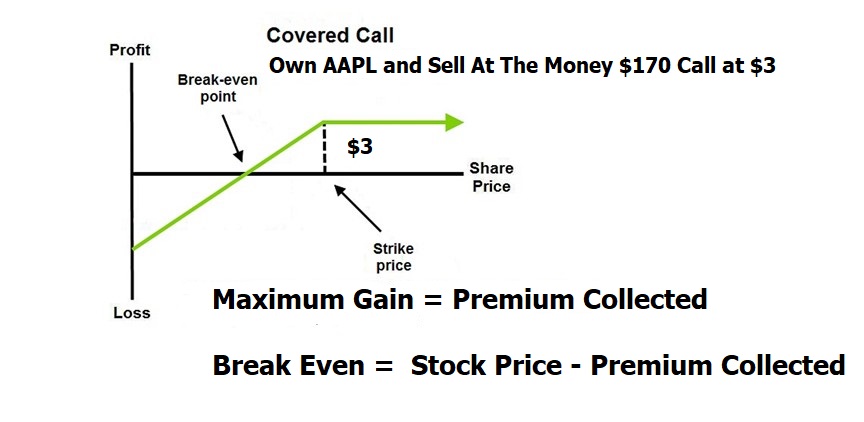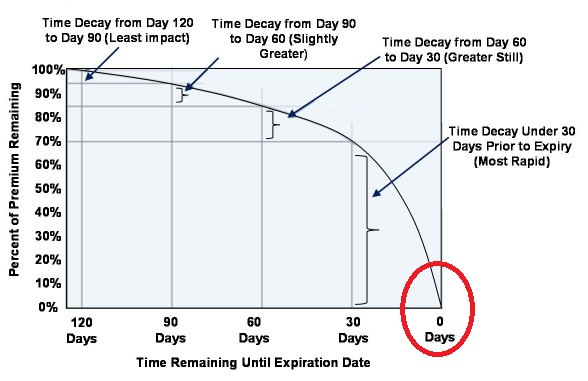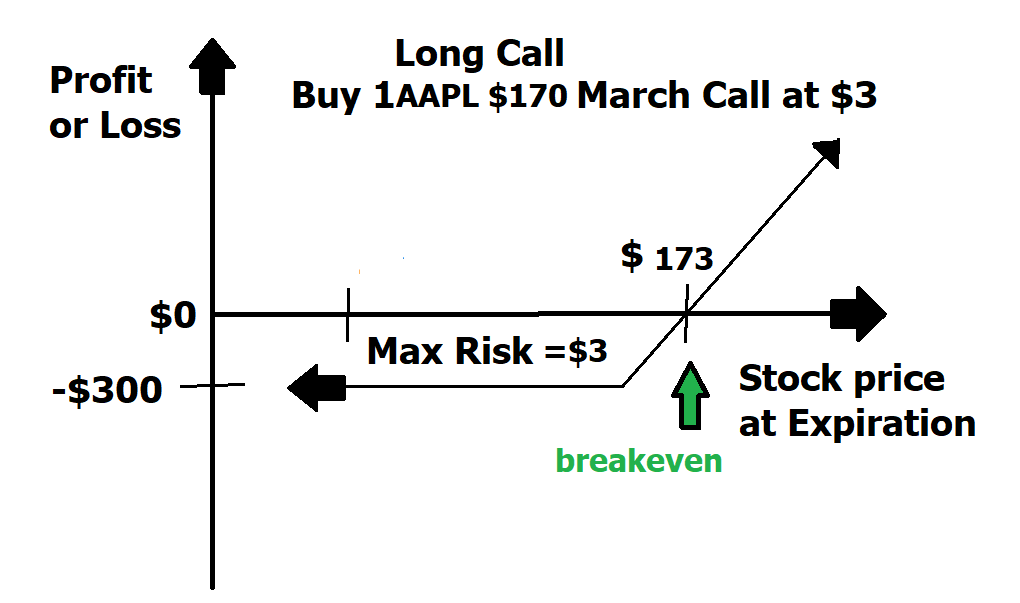
In the 1970’s when Options were launched on the Chicago Board Options Exchange there were only a handful of stocks that traded options and usually the options series expired quarterly. We’ve come a long way regarding options trading in the last five decades.
Today there are thousands of companies whose stocks also have options and many of them have weekly options expirations. For traders who understand risk management, this is a literal smorgasbord of opportunity to create income from options trading. In this article, we’ll discuss the opportunity, risk, and reward potential of two weekly options expirations strategies, and why it’s so exciting for traders and risk managers.
The word option literally means choice. The more choice you have, the clearer you can understand the possibilities of risk and reward. Options are instruments which share many of the identical characteristics of insurance contracts. When you buy the options, you have limited risk and unlimited profit potential. When you sell or create the option, you are creating an obligation that you will be required to fulfill unless you liquidate the position before the options expire.
Recently we published a beginner series in options trading which explores the basics of these fascinating instruments. You can access those articles here:
Options Trading for Beginners – Part 1 Buying Call Options
Options Trading for Beginners – Part 2 Buying Put Options
Options Trading for Beginners – Part 3 Selling Call Options
Options Trading for Beginners – Part 4 Selling Put Options
There are essentially two reasons that Weekly Options are incredibly exciting for traders. First off, they offer tremendous leverage for option buyers. For example:
Let’s assume that Apple ($AAPL) is trading at 170. If you were to purchase 100 shares of Apple it would require that you come up with $170 x 100 shares = $17,000. In comparison, an Apple at the Money $170 Call Option with only 5 days left to trade might be trading at $3. This means that for $300 you control 100 shares of Apple stock. If Apple at expiration closes below $170, the option will expire worthless. But on the other hand, if Apple makes a big move between now and the expiration 5 days away the returns can be exponential, and your $300 investment can turn into thousands.
To begin to appreciate the opportunity that option present, look at them from multiple angles. Look at options as:
- Instruments to generate income for the stock owner’
- Instruments for pure speculation
- Both of the above
Trading Weekly Options to Generate Income on an Existing Position
Imagine that you are a portfolio manager who owns millions of shares of APPLE at lower prices. They are looking at the stock and thinking that Apple is not going to move much in the next few days, so they decide to SELL some $170 call options for $3 and bring that premium into their account. The reasoning here is the portfolio manager believes at Option Expiration the Apple at the Money 170 call will expire worthless. By selling those options they are obligating themselves to deliver APPLE stock at $170 and looking to keep the premium in the account. Since they are collecting $3 in premium this can not only be viewed as additional income, but the portfolio manager has created $3 per share of additional downside protection on his position.
If Apple were to trade down to $167 per share at expiration the portfolio manager, even though the position fell $3 would be at a break-even position from where they initiated the trade. This factor is one of the big reasons that weekly options trading is so exciting. It’s hard to imagine that a market can work totally against you, and you can still make money when you create the correct options tactic.
This is referred to as a COVERED CALL position. It’s covered because the portfolio manager owns the underlying stock. By initiating this trade, the portfolio manager is giving up profit potential at any price over $170 plus the premium collected. Since the trade is only 5 days in length this can be a very attractive, yet aggressive way to increase ROI on a portfolio. Let’s do some math to explore the possibilities:
$3 premium divided by $170 stock price = 1.76% return in 5 days.
This is the maximum return on the trade, and it will occur right at the $170 strike price. Since this type of trade is possible to initiate every week, you can quickly see why many options traders refer to this type of trading as “picking up quarters in front of a steam roller.”
Graphically the risk/reward profile of this Covered Call would look like this:

Trading Weekly Options as a Highly Leveraged Speculation
But, now let’s look at how the Call Option Buyer in this transaction will evaluate the purchase of the Call.
Buy 1 March AAPL 170 call at $3.
There are a couple of important considerations that we need to make clear for the options buyer. They have limited risk and unlimited profit potential. This sounds attractive on the surface but to understand it, you must try to determine what is the probability of the market closing above the strike price over the next 5 days?
Options are deteriorating assets. Since we know that they have a definitive expiration date, we know quite factually that with all things being equal an option will be worth less tomorrow than it is today. What this means is that all options suffer from something called time decay.

The graphic above shows the traditional way that an option premium expires. However, for weekly options traders we need to understand that they are dealing with exponential premium decay. The red circle above highlights what they are having to contend with whenever they purchase an option. For purposes of simplicity let’s break this down as much as possible.
The March 170 Call Option is trading at $3.
There are 5 days before expiration.
When we divided the premium of $3 by 5 days, we can expect premium decay of .60 per day. This means that if prices remained stable, we could expect the following deterioration:
Day 1 – Option Premium = $3.00
Day 2 – Option Premium = $2.40
Day 3 – Option Premium = $1.80
Day 4 – Option Premium = $1.20
Day 5 – Option Premium = $.60
Day 6 – Option Premium = ZERO
This is what all call option buyers must contend with.
On the other hand, for the $3 premium they are controlling over $17,000 worth of Apple stock. Granted they are only controlling it for a few days but should APPLE stock rise over the strike price plus the premium collected the returns are quite handsome. Graphically the risk/reward profile for the Call Option buyer looks like this:

As a trader, you get to decide whether you are attracted to collecting premium and taking advantage of predictable time decay, or whether you want to swing for the fences and control a huge amount of stock for a very small premium. Should a big move unfold, you will understand the power and leverage of buying call options.
Options trading is very exciting. The potential for huge rewards and losses is always present. That is why it is important to practice these strategies for at least 90 days ‘paper trading’ before you ever step into a real time trading environment.
Great options traders understand risk and they know how to create reward profiles that have a very high probability of success. With weekly options expirations the opportunities to experiment with strategies are endless. What is vitally important is to understand that the probabilities favor the options seller most of the time. Why? Stocks usually trend about 30% of the time. The other 70% of the time stocks are usually in a trading range.
In the examples that I have shared, I purposely focused on limited risk options tactics. Whenever you trade options, it is paramount that you always understand the best case and worst-case scenario before you ever consider putting on a trade. Most traders would not get very excited by the prospects of collecting premium and watching it decay day by day. But it is a very popular, effective, and repeatable strategy that savvy traders exploit regularly. If you can manage and understand the risk, you might find it worth exploring.
We discuss many of these types of tactics in our “Learn to Trade with A.I.” Master Class webinars and I’d like to extend an invitation for you to attend.
Markets Go Up.
Markets Go Down.
Markets Trade Sideways.
For each of these scenarios there is a limited risk options strategy that has very high probability of success, and you should learn as much about them as possible. With artificial intelligence, neural networks, and machine learning in your corner you are enhancing the probability of success even further as the Vantagepoint A.I. trend forecasts have proven to be up to 87.4% accurate.
How do you define OPPORTUNITY when trading inflationary markets?
How do you go about making sense of it all?
If you study the headlines, you’ll mostly find that the journalists, politicians, and monetary authorities are wrong.
The beauty of neural networks, artificial intelligence, and machine learning are they are fundamentally focused on pattern recognition to determine the best move forward. When these technologies flash a change in forecast – pay attention, it is newsworthy.
We often do not understand why something is occurring but that does not mean that we cannot take advantage of it.
Remember What’s Important.
Price is the only thing that matters when we are trading. It is what can make you wealthy or decimate your account. Everything else is just noise.
Are you capable of finding those markets with the best risk/reward ratios out of the thousands of trading opportunities that exist?
Knowledge.
Useful knowledge.
And its application is what A.I. delivers.
Isn’t that what we all want from the markets? Consistency.
So, imagine what might your portfolio would look like today had you applied artificial intelligence to it five years ago.
See for yourself how a machine-based learning software makes it easier to find statistically solid trends with less risk.
Most traditional indicators that traders use today were developed in the 1970’s and 1980’s. They are incapable of telling you what the market is going to do moving forward.
Once again, machine outperforms humanoid.
Since artificial intelligence has beaten humans at Chess, Poker, Blackjack, Go and Jeopardy, why do we think that trading would be any different?
It’s important that you find out more and discover why artificial intelligence keeps traders on the right side of the trend at the right time.
Join us for a FREE, Live Training. We’ll show you at least three stocks that have been identified by the A.I. that are poised for big movement… and remember, movement of any kind is an opportunity!
Discover why artificial intelligence is the solution professional traders go-to for less risk, more rewards, and guaranteed peace of mind.
Visit with us and check out the A.I. at our Next Live Training.
It’s not magic. It’s machine learning.
Make it count.
IMPORTANT NOTICE!
THERE IS SUBSTANTIAL RISK OF LOSS ASSOCIATED WITH TRADING. ONLY RISK CAPITAL SHOULD BE USED TO TRADE. TRADING STOCKS, FUTURES, OPTIONS, FOREX, AND ETFs IS NOT SUITABLE FOR EVERYONE.
DISCLAIMER: STOCKS, FUTURES, OPTIONS, ETFs AND CURRENCY TRADING ALL HAVE LARGE POTENTIAL REWARDS, BUT THEY ALSO HAVE LARGE POTENTIAL RISK. YOU MUST BE AWARE OF THE RISKS AND BE WILLING TO ACCEPT THEM IN ORDER TO INVEST IN THESE MARKETS. DON’T TRADE WITH MONEY YOU CAN’T AFFORD TO LOSE. THIS ARTICLE AND WEBSITE IS NEITHER A SOLICITATION NOR AN OFFER TO BUY/SELL FUTURES, OPTIONS, STOCKS, OR CURRENCIES. NO REPRESENTATION IS BEING MADE THAT ANY ACCOUNT WILL OR IS LIKELY TO ACHIEVE PROFITS OR LOSSES SIMILAR TO THOSE DISCUSSED ON THIS ARTICLE OR WEBSITE. THE PAST PERFORMANCE OF ANY TRADING SYSTEM OR METHODOLOGY IS NOT NECESSARILY INDICATIVE OF FUTURE RESULTS. CFTC RULE 4.41 – HYPOTHETICAL OR SIMULATED PERFORMANCE RESULTS HAVE CERTAIN LIMITATIONS. UNLIKE AN ACTUAL PERFORMANCE RECORD, SIMULATED RESULTS DO NOT REPRESENT ACTUAL TRADING. ALSO, SINCE THE TRADES HAVE NOT BEEN EXECUTED, THE RESULTS MAY HAVE UNDER-OR-OVER COMPENSATED FOR THE IMPACT, IF ANY, OF CERTAIN MARKET FACTORS, SUCH AS LACK OF LIQUIDITY. SIMULATED TRADING PROGRAMS IN GENERAL ARE ALSO SUBJECT TO THE FACT THAT THEY ARE DESIGNED WITH THE BENEFIT OF HINDSIGHT. NO REPRESENTATION IS BEING MADE THAT ANY ACCOUNT WILL OR IS LIKELY TO ACHIEVE PROFIT OR LOSSES SIMILAR TO THOSE SHOWN.




